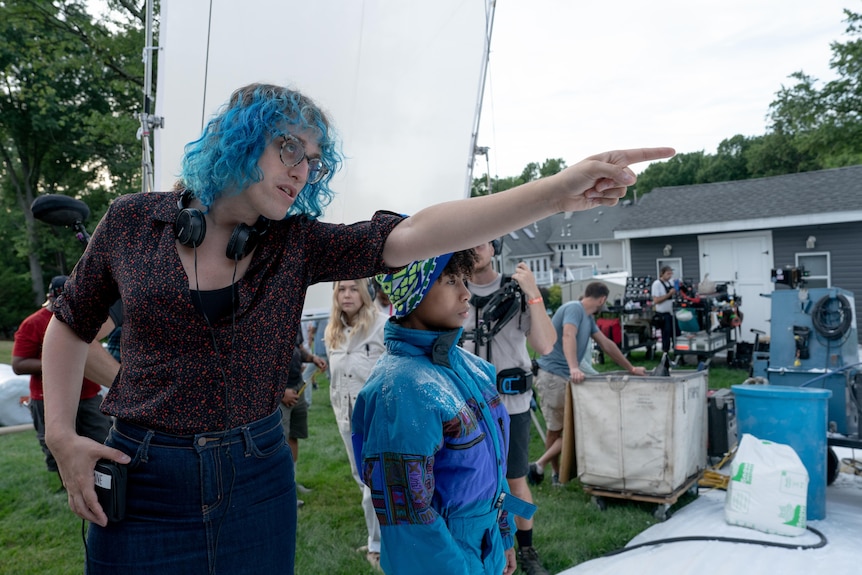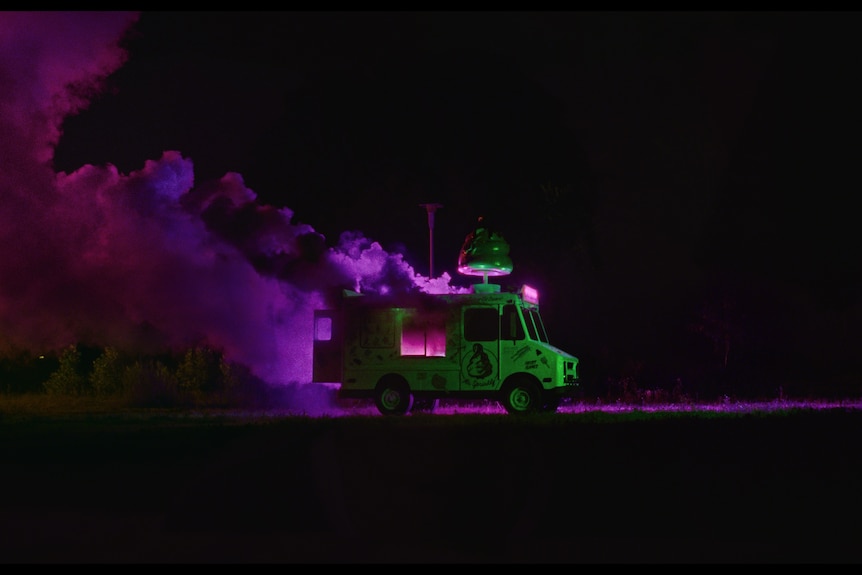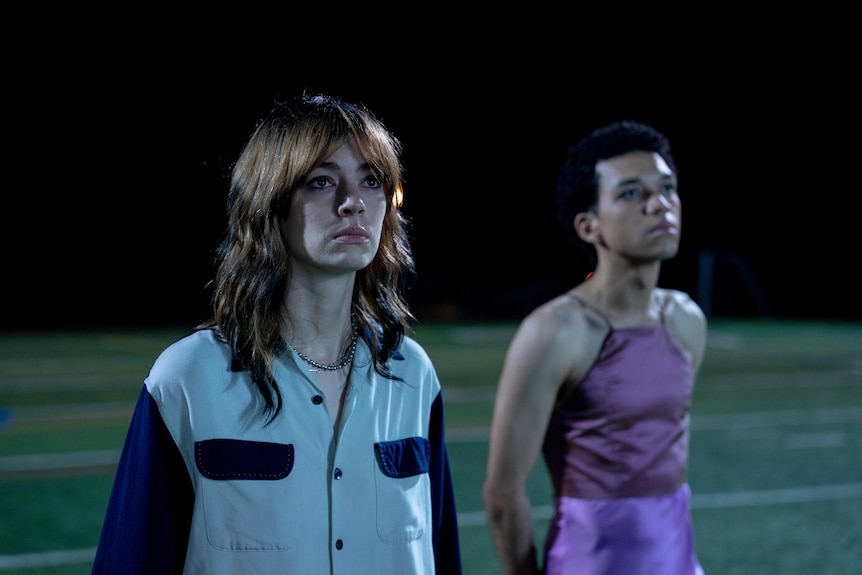Equal parts analog horror, teen drama and parable, I Saw the TV Glow turned into the cult phenomenon of the year.
Perhaps it was inevitable that writer-director Jane Schoenbrun, a filmmaker keenly attuned to the vagaries of online obsession, would end up cultivating a fandom of her own.
Their previous film, We’re All Going to the World’s Fair, featured a young vlogger who connects with an anonymous stalker over a sinister viral challenge. In their documentary A Self-Induced Hallucination, about the internet urban legend known as the Slenderman, they examined creepypasta culture bleeding into real life through a collage of YouTube videos.
With I Saw the TV Glow, Schoenbrun evokes the blurred inner space between screen and reality through a luminescent, dreamlike vision of ’90s suburbia—an aesthetic beholden to “classic video store teen angst,” in their own words.
The sonic textures of the era are similarly revived by some of Schoenbrun’s favorite contemporary artists, with a soundtrack featuring Caroline Polachek, Sloppy Jane and Phoebe Bridgers. As an A24 production, it marks a notable departure from the micro-budget minimalism of their previous work.
The film centers on two teenage misfits, Owen (Justice Smith; Pokémon Detective Pikachu) and Maddy (Brigette Lundy-Paine; Aytpical), who spend their waking moments in thrall to a youth TV show called The Pink Opaque.
For Schoenbrun, who drew on his own formative experiences with Buffy the Vampire Slayer, it was important to capture “the memory of what it felt like to watch those shows, rather than how they actually were.”
“There was definitely this point where you could come across something on cable TV in the ’90s that was a little weirder, scarier, and maybe even gayer than what we were supposed to be watching.”

Writer-director Jane Schoenbrun went into I Saw the TV Glow wanting to make something “incredibly personal” that people would engage with in a “visceral way.” (Sony Photos: Spencer Pazer)
With its supernatural thrills and chintzy sound effects, the fictional monster-of-the-week show feels right at home among other contemporary childhood classics, from Goosebumps to Are You Afraid of the Dark?
Through the eyes of Owen and Maddy, The Pink Opaque is intoxicating, terrifying and complex, and a portal through which they can glimpse their true selves between the scan lines of a tube television.
For trans people, this immediate sense of intense identification—colloquially referred to as “a crack”—is the moment that sets a journey of gender discovery in motion.
Schoenbrun, who had just begun transitioning when they wrote the film, set out to articulate not just the tumult of dysphoria but “the experience of slowly pulling [themselves] FROM [a false reality] and starting the work process… having the courage to step out into transition.”

I Saw the TV Glow is a departure from the micro-budget minimalism of Schoenbrun’s previous work. (Sony Pictures)
A relationship with a TV show
I Saw the TV Glow hinges on The Pink Opaque’s abrupt fifth-season cancellation and Maddy’s subsequent disappearance — a twist inspired by the infamously disturbing Twin Peaks season 2 finale, which Schoenbrun watched early on puberty.
For the director, the experience of a TV show ending before its time, suspended in unsettling non-resolution, mirrored the trans experience of growing up in a body that felt disconnected from their sense of self.
“For a lot of trans people, certainly for me, there’s been an unresolved wrong since then,” says Schoenbrun.
“I literally had recurring dreams where [Twin Peaks] it would come back and work itself out… The way something like that can seep into your subconscious, as so much of David Lynch’s work does, was a major inspiration for the film.”

Maddy (left) goes missing after their favorite TV show is cancelled, in a twist inspired by the infamous Twin Peaks S2 finale. (Sony Photos: Spencer Pazer)
As an adult who now proudly identifies as non-binary, Schoenbrun’s relationship with the media that once provided a lifeline has become more distant. They recently saw Buffy again for the first time since her early transition, a process she likens to meeting an ex.
“I could go right back to everything he meant to me, how much of myself I poured into him… [All] those moments that meant so much to me, were my definition of being in love at one point.”
As the characters in Schoenbrun’s films deal with the dissociative sensation of seeing themselves on screen, the filmmaker can now look back on the other side, where their lives have “a better kind of love than a relationship with a TV show.”
“It was painful to remember,” they say. “I felt a lot of sympathy for the child in need [Buffy] so bad.”
Since its debut at this year’s Sundance Film Festival, I Saw the TV Glow has inspired an array of fervent reactions. The film can alienate as much as it comforts, offering few direct answers for screen-watchers, queer audiences, and everyone else who succumbs to its enigmatic presence.
“The kind of cinema I really believe in is a cinema that persists – that says something that’s not so simple as a moral,” explains Schoenbrun – an ethos they inherited from “so much of the art that supported [their] hand through life”.
“I try to make sure that every film is not wasted. It’s such hard work to make something, and the only way I know how to do it is to make something incredibly personal that people can engage with in a very deep and, hopefully, visceral way.”
I Saw the TV Glow is in theaters now.
#90s #shows #helped #Jane #discover #theyve #turned #experience #cult #film